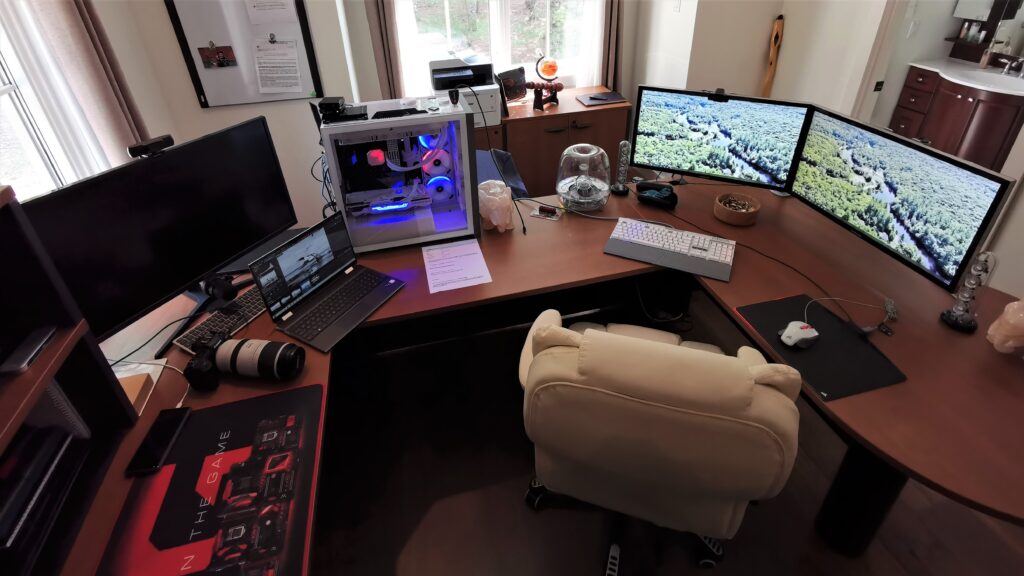INTEL OPTANE H20 COMPATIBILITY
The Intel H20 Optane Memory SSD will be available to oem manufacturers only for inclusion in their pre-configured systems. It can not be purchased through retail outlets via consumer sales. It is only supported by Intel 11th Gen Core Series Processors with the Intel 500 Series Chipset and through use of the latest IRST 18.1 or later software release. Even if you get your hands on an H20 module, you cannot simply throw it into a system, format it and believe your good. As we mentioned, the H20 requires bifurcations where two PCIe 3.0 lanes feed into the Optane Memory chip while the other two feed into the Intel QLC NAND. Your system would have to match these above specs and you would have to get your hands on the Optane software itself to enable and disable it.
TSSDR TEST BENCH AND PROTOCOL
Typically, we might discuss optimization that we had completed in order to achieve the highest performance possible on our Test Bench , but this review differs. Our Test Bench today is a 2021 HP Spectre X360 15″ ultrabook which contains an Intel Core i7-1165G7 CPU (Quad Core, 8MB Intel Smart Cache, up to 4.7GHz with Turbo Boost), 16GB of LPDDR4-2933 RAM, Intel Iris Xe Graphics with a IPS 4K Touchscreen, WiFi 6 AX201 (2x) and BT combo…with the Intel H20 1TB SSD for storage. Check Amazon for HP Spectre X360 pricing. The ONLY optimization that we have done for our testing today is that we set the system from ‘Balanced’ to ‘High Performance’ mode.
We are going to break away from our typical pattern of benchmarks somewhat in an attempt to better demonstrate the capabilities of the Intel H20 Optane Memory SSD. Although we will include a few of our typical synthetic benchmarks, we are also going to look at some true data testing as well as start times for photography specific software. Unfortunately, we haven’t the former Intel H10 Optane Memory SSD or the Intel 670P in our offices and will not be able to provide a comparable, but for results that we have already obtained through testing in lesser systems.

CRYSTAL DISK INFO VER. 8.11.2 X64
Crystal Disk Info is a great tool for displaying the characteristics and health of storage devices. It displays everything from temperatures, the number of hours the device has been powered, and even to the extent of informing you of the firmware of the device.
H20 OPTANE SSD
H20 OPTANE MEMORY
Crystal DiskInfo provides identifying features of the Intel H20 Optane Memory SSD and confirms that it is operating in PCIe 3.0 mode with NVMe 1.4, and that the SSD is TRIM compatible. Looking at the Optane Memory module in the second chart, we note that NVMe 1.1 is being used. The amount of data put through the Optane Memory Module as compared to the SSD itself is rather interesting.
START TIME TESTING – DXO PHOTOLAB 4 ELITE
As an avid photographer who travels and photographs wildlife frequently, I can relate that photography software is some of the most demanding out there. I use a Canon R5 and shoot only in RAW and each picture is in excess of 50MB before processing. My software of choice is DXO Photo Lab 4 Elite and I have found that, prior to this testing, attempting to use the software on a laptop with lesser specs than described above could be very frustrating. Things took a long time to start and ran slowly in that portable setup.
In fact, I have only been happy with DXO PL4 Elite since updating my main Desktop PC to Intel Core i9-11900K CPU, 32GB of Corsair Dominator DDR4-3600 RAM, Zotac GeForce 3080 Trinity GPU, with a 4TB Sabrent Rocket 4 Plus NVMe SSD. It still takes the most powerful PC in the industry 15 seconds to start DXO Photo Lab 4 Elite. It took well over 20 seconds with the former laptop. Take a look at the start times in this chart below with our newest Intel H20 Optane Memory contained test Bench:
Start times were just the beginning of our new DXO PhotoLab 4 Elite experience as we spent the better part of a week using the Intel H20 Optane Memory contained ultrabook to develop our work in the field (quite literally) without an issue. We find that, whether it be the fact that the new laptop is an upgrade or simply the addition of the H20, we can use DXO Photo Lab 4 Elite without feeling like it is just dragging along.
 The SSD Review The Worlds Dedicated SSD Education and Review Resource |
The SSD Review The Worlds Dedicated SSD Education and Review Resource | 

An interesting scenario for engineer’s and production managers: Make an SSD that’s designed specifically for only laptop’s with extra large ram cache with roughly equal size dram (or have a desktop card with a 18650 holder { or caps? – with holder, customer who want can parallel more 18650 on demand} on board – like that gigabyte board).. Laptops have batteries, so loosing the data in the drive is not an issue if theres a battery. The OS can write frequently used data to ram cache primarily. The total drive cache will not be huge – perhaps 16, 32, 64gb to keep prices down. Put the duplication to dram in a queue for the firmware – when the drive is not being used, and then run it after the fact to keep read/write speeds to full dram speeds.